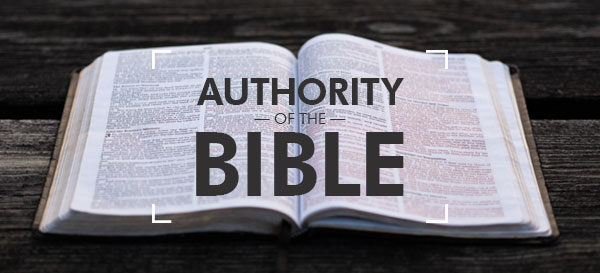© 2021 Nick Goffin / Harvest City Church
HAS THE BIBLE BEEN ACCURATELY PRESERVED?
In this article, we cover the second of our two questions:
- Has the Bible been accurately preserved?
- How can we be confident that the letter Paul wrote to the Romans is in fact the letter that he sent to the Romans?
- How do I know that the English version I have in my hand is saying the same thing that was written all those years ago?
Critics go out of their way to spin the evidence in order to make the Bible seem as unreliable as possible. Phrases like ‘copies of copies of copies’ are used frequently, as if the preservation of the Bible has been a giant game of Telephone. Like all the best lies, this is based around a core of truth, and it is easy to be fooled if you don’t know the whole story.
Ancient writing materials
Papyrus was by far the most common writing material available in Biblical times and was made from the papyrus plant—a type of reed that grew in the shallow lakes and rivers of Ancient Egypt and Syria. The name of the Bible comes from the Greek word ‘Biblios’, meaning ‘books’. It is believed that this word came from the name of the Syrian port of Byblos, where large shipments of papyrus passed through 1.
The main issue with papyrus as a writing material was in its perishability 2. Papyrus generally has a very limited lifespan, which meant that documents had to be copied and re-copied in order to preserve them.
How was the Old Testament preserved?
Preservation of the Scriptures began with Moses, who gave the responsibility to the Levites (Deuteronomy 31:24-26). Additionally, Deuteronomy 17:18-19 charges each King of Israel to make for himself a new copy of the law for study, taken from the copy held by the Levites.
Reverence for the integrity of the Word was baked into Israelite culture (to the point where Jesus condemned them for going too far in Matthew 23:23). The most authoritative version of the Old Testament is known as the Masoretic text, named for the Masoretes, a group of Jewish scribes 3. They had a sophisticated system of preservation 4:
- The total number of verses, words and letters in each section was noted, as well as which verse, word and letter was at the centre of the section. This allowed the easy detection of future errors.
- Traditional Hebrew text contained no vowels, so they added markings to indicate correct pronunciation. Signs for stress and pause were also added to facilitate public reading.
- In a similar manner to modern Bible translators, the Masoretes did not attempt to make corrections. If they found differences in spelling or wording between the various older manuscripts they were using, these were simply noted.
This resulted in an incredibly consistent text. The similarity between the earliest printed versions (late 1400s AD) and the earliest surviving hand-written manuscripts (late 800s AD) has astonished experts.
However, there was a problem. Despite their quality, the oldest copies of the entire Old Testament dated to around 1000 AD, 1400 years after the last Old Testament book was written. How were we to be sure that the documents the Masoretes had to work with were themselves accurate?
This was answered by the discovery of the Dead Sea Scrolls in Qumran in 1946. These contained a complete copy of Isaiah and partial copies of every book of the Hebrew Canon (with the exception of the Book of Esther) 5. The scrolls dated to the 1st or 2nd century BC, over a thousand years older than the earliest Masoretic manuscripts. When the two were compared, an extremely high level of similarity was found 6. For example, the two copies of Isaiah found in the Qumran caves were word-for-word identical to the Masoretic text 95% of the time, with the remaining 5% mainly consisting of obvious slips of the pen or spelling errors.
How was the New Testament preserved?
In my experience, it is the New Testament that comes under the strongest attack. I think this is because, whereas critics can just ignore the Old Testament as legend, the death and resurrection of Jesus makes personal demands of repentance. It is therefore necessary for critics to actively seek to discredit it.
Scholars estimate that there are 400,000 variants (differences between manuscripts) in the Greek New Testament, which only has 138,000 words 7. This looks really bad! How can we know what the New Testament really said when we have three options for every word?
The answer is that there aren’t actually three options per word. There is a lot of context to those raw numbers that sceptics like to carefully not mention 8:
- The overwhelming majority of these variants are minor differences in spelling and word order; they have no impact whatsoever on the meaning of the text.
- Of the remaining fraction, the majority are obvious writing errors.
- Only 1% of the total variants are actually viable (which means that they could be part of the original text) but it is often possible for scholars to work out which one was the original.
- Once these are all accounted for, we have a body of manuscript evidence for the New Testament that is close to 99.5% in agreement.
The number of variants also depends on the number of manuscripts you have: the more manuscripts, the more variants you’re likely to find. For the New Testament, we have over 5700 Greek manuscripts and over 18,000 non-Greek manuscripts. No other ancient book even begins to come close 1. The number of variants speaks to the wealth of writings that we have to draw on, and adds to the weight of evidence for the accuracy of the New Testament.
Has the Bible been accurately preserved?
While it is true that some discrepancies exist between different manuscripts (which is why your English Bible is full of footnotes), the idea that the message has been lost or corrupted in any significant way doesn’t hold up to scrutiny. Once spelling errors and basic writing mistakes have been accounted for, all we are really discussing when we talk about ‘errors in the Bible’ is uncertainty about the occasional word or verse.
No matters of doctrine are in any way impacted by the tiny minority of errors that do exist. If you were to develop doctrine from the manuscripts that were the most different to each other, you would end up with exactly the same Christian faith at the end. God has always used imperfect people to achieve His perfect will, and the preservation of the Bible is no exception. Through war, exile, persecution and the slow grind of time, God has successfully preserved His Word for His children.
References
1. McDowell, J. The New Evidence that Demands a Verdict. (T. Nelson, 2017).
2. Bruce, F. F. The Books and the Parchments: Some Chapters on the Transmission of the Bible. (Pickering & Inglis, 1950).
3. Who were the Masoretes? https://www.gotquestions.org/who-Masoretes.html.
4. Promeet, D. Masoretic text. Encyclopedia Britannica https://www.britannica.com/topic/Masoretic-text.
5. Qumran cave scrolls. https://www.deadseascrolls.org.il/learn-about-the-scrolls/introduction.
6. Geisler, N. L. & Nix, W. E. A General Introduction to the Bible. (Moody Press, 1986).
7. Ehrman, B. D. Misquoting Jesus: The Story Behind Who Changed the Bible and Why. (HarperCollins, 2005).
8. Komoszewski, J. E., Sawyer, M. J. & Wallace, D. B. Reinventing Jesus. (Kregel Publications, 2006).












